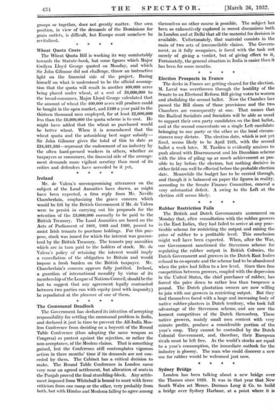Rubber Restriction Fails
The British and Dutch Governments announced on. Monday that, after consultation with the rubber growers in the East Indies, they had failed to arrive at any prac- ticable scheme for restricting the output and raising the price of rubber to a profitable level. This conclusion might well have been expected. When, after the War, our Government sanctioned the Stevenson scheme for regulating the rubber output in British Colonies, the Dutch Government and growers in the Dutch East Indies refused to co-operate and the scheme had to be abandoned when the price had fallen to a low level. Since then free competition between growers, coupled with the depression in the United States, the chief purchaser of rubber, has forced the price down to rather less than twopence a pound. The Dutch plantation owners are now willing to join with our growers in restricting output. But they find themselves faced with a large and increasing body of native rubber-planters in Dutch territory, who took full advantage of the Stevenson scheme, and are now the keenest. competitors of the Dutch themselves. These native growers, mainly small men content with very minute profits, produce a considerable portion of the year's crop. They cannot be controlled by the Dutch Colonial Government, and, therefore, their European rivals must be left free. As the world's stocks are equal to a year's consumption, the immediate outlook for the, industry is gloomy. The man who could discover a new use for rubber would be welcomed just now.


































 Previous page
Previous page